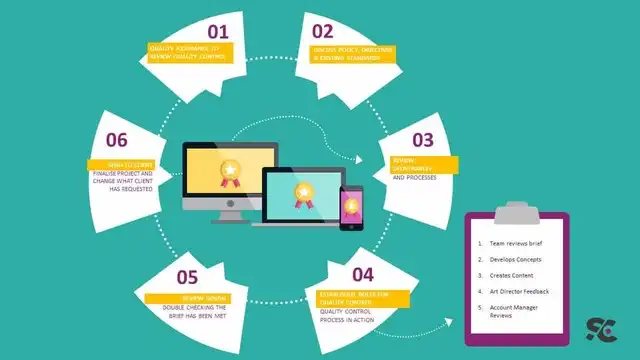
Schematics for Design Quality Control
Quality control of design is a vital process of all industries and it involves two parties, namely the client and the design professional. The client has an idea of what he desires in the product. This is followed by the design professional who has to convert this idea into a working specification and this involves taking quality design control measures.
Quality control of design can be visual, mechanical, or a combination of both, dependent on the nature of the product being produced.
If a client requests for visual quality control of design, he/she shall have to prepare the necessary design documentation which shall include: A detailed design sheet for making a graphic or drawing, a copy of the whole file, a written description of the product, and finally the checklist for taking quality design control measures.
The complete documentation shall consist of the following items: Identification of the final design format, brief description of the concept, the targeted end product, and its specifications, and finally a checklist for taking action. While preparing the design documentation, the client shall have to make sure that all the required information is included in the documents.
Taking a design quality control measure involves first deciding what kind of control will be necessary. The overall quality should be high and the identified errors should be corrected. Once this is decided, a series of activities shall be carried out to achieve the purpose. These activities include making sure the product is prepared as per the customer’s requirements, double-checking the completed work and make sure that the product meets the final output criterion. The processes involved while taking a design checklist are mentioned below:
o Point-to-Point Wiring – This is a QC process where there is a direct connection between electrical circuits. In this process, the circuit is created as per the client’s requirements and fixed wiring is created. A test is done to identify any incorrect wiring. When proper point-to-point wiring is found then a QA team follows up with corrections and fine-tune the design standards accordingly.
o End-to-End QA Checklist – In the process of Quality control of design assurance, a complete list of items is generated along with a checklist of items to be checked on them. After successful completion of the end-to-end checklist, the client gets a certificate of approval from the end-to-end group. A very similar type of checklist called the ‘peer review checklist’ is also used by the QA team to ensure that the end-to-end checks have been performed as per the client’s requirements. In the case of peer review, the two groups negotiate and decide on the areas of improvement and the areas they want to remove from the checklist.
o End-to-Page Checklist – In the end-to-page checklist, the client is given a list of specific requirements to be checked and a design package is generated for each of the required points. These design packages contain the suggested changes in the project that need to be communicated with the stakeholders.
Once these changes are agreed upon, then they are integrated into the project. The QA team then validates these design standards and ensures that they are conformed to them. Once this is done, then the QA team starts with the actual testing phase.
o Schematic Diagrams – During the testing phase, the testers check the design package carefully for discrepancies and technical glitches. Once the specifications are verified and finalized, the team generates the wiring diagrams.
This diagramming process generates an image of the entire project and helps in better understanding. The schematic diagrams are generated with the help of AutoCAD software. The AutoCAD Wiring Diagrams software is available free of cost or can be acquired by downloading it from the website of the vendor.
The final product would contain a comprehensive set of point-to-point wiring diagrams. Then the team submits the WAN/OWP schematics for peer review. The peer review team verifies these schematics and then suggests modifications if any are needed. Once the peer review is complete, the team again generates the final version of the design quality control tool. The tool is then released for end-user consumption.
